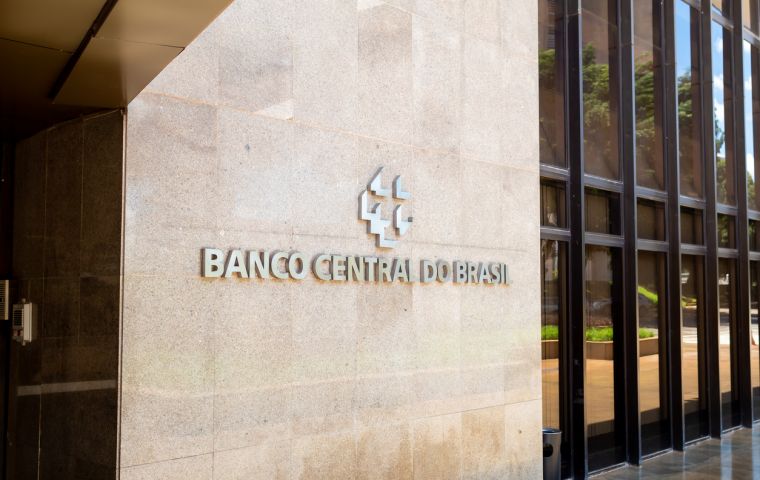MercoPress. South Atlantic News Agency
Brazil's yearly inflation projection adjusted slightly upwards
 According to the Brazilian Institute of Geography and Statistics (IBGE), the IPCA has accumulated 3.93% in 12 months
According to the Brazilian Institute of Geography and Statistics (IBGE), the IPCA has accumulated 3.93% in 12 months Brazil's Central Bank (BCB) Monday released the latest edition of its Focus Bulletin showing a slight upward adjustment in the Broad National Consumer Price Index (IPCA) from 3.96% to 3.98% this year, Agencia Brasil reported. The index is considered the country's official inflation. The weekly survey among leading financial institutions also projected an increase from 3.8% to 3.85% next year while for 2026 and 2027 the forecasts were 3.6% and 3.5% respectively.
The estimate for 2024 is within the inflation target range to be pursued by the Central Bank. Set by the National Monetary Council (CMN), the target is 3% for this year, with a tolerance interval of 1.5 percentage points up or down. In other words, the lower limit is 1.5% and the upper limit is 4.5%. For 2025 and 2026, the inflation targets are set at 3%, with the same tolerance.
In May, Braziil's inflation was 0.46% driven by food and drinks, after having registered 0.38% in April. According to the Brazilian Institute of Geography and Statistics (IBGE), the IPCA has accumulated 3.93% in 12 months.
To achieve the inflation target, the Central Bank's main instrument is the basic interest rate, Selic, set at 10.5% per year by the Monetary Policy Committee (Copom). The recent rise in the dollar and increased economic uncertainty led the Central Bank to halt the interest rate cut it began almost a year ago. At a meeting last week, the committee unanimously kept the Selic rate at this level after seven consecutive reductions.
From March 2021 to August 2022, the Copom raised the Selic 12 times in a row, in a cycle of monetary tightening that began amid rising food, energy, and fuel prices. From August 2022 to August 2023, the rate was kept at 13.75% per year, seven times in a row. Once prices were under control, the Central Bank started cutting the Selic rate.
Before the start of the upward cycle, the Selic had been reduced to 2% per year, the lowest level in the historical series that began in 1986. Because of the economic contraction caused by the Covid-19 pandemic, the Central Bank lowered the rate to stimulate production and consumption. The rate remained at the lowest level in history from August 2020 to March 2021.
According to the financial market, the Selic rate should be ending 2024 at its current level of 10.5% per year. By the end of 2025, the basic rate is expected to fall to 9.5% per year. For 2026 and 2027, the forecast is for it to be reduced again, to 9% per year.
The Copom raises the basic interest rate to contain heated demand, and this has an impact on prices because higher interest rates make credit more expensive and encourage savings. But in addition to the Selic rate, banks take other factors into account when setting the interest they charge consumers, such as the risk of default, profit, and administrative expenses. Thus, higher rates can also hinder the expansion of the economy.
When the Copom lowers the Selic rate, the tendency is for credit to become cheaper, encouraging production and consumption, reducing control over inflation, and stimulating economic activity.
Financial institutions' projections for the growth of the Brazilian economy this year varied from 2.08% to 2.09%. For 2025, the Gross Domestic Product (GDP) - the sum of all goods and services produced in the country - is expected to grow by 2%. For 2026 and 2027, the financial market estimates a GDP expansion of 2% for both years.
Exceeding the projections, in 2023 the Brazilian economy grew by 2.9%, with a total value of R$ 10.9 trillion, according to the IBGE. In 2022, the growth rate was 3%.
The dollar rate is forecast at R$ 5.15 for the end of this year. By the end of 2025, the American currency is expected to remain at the same level.




Top Comments
Disclaimer & comment rulesCommenting for this story is now closed.
If you have a Facebook account, become a fan and comment on our Facebook Page!